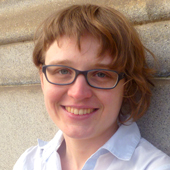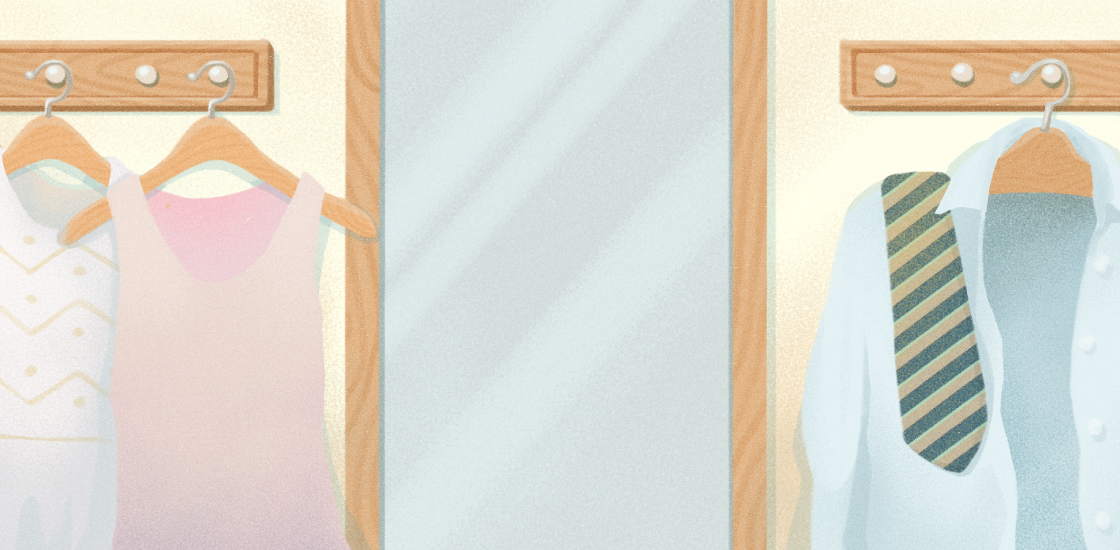THIS ARTICLE IS MORE THAN FIVE YEARS OLD
This article is more than five years old. Autism research — and science in general — is constantly evolving, so older articles may contain information or theories that have been reevaluated since their original publication date.

Listen to this story:
Many articles about women with autism focus on the fact they are often diagnosed later than men or on the differences between men and women with autism. I believe we need to broaden the conversation to take into account a diversity of experiences, including people who identify as ‘non-binary’ instead of as men or women.
The stereotypical narrative suggests that for someone like me, who was diagnosed on the autism spectrum as an adult, childhood was a missed opportunity for early intervention and that without state-sanctioned services, I am a mess.
This singular focus on age at diagnosis carries with it many negative connotations. By saying that female-bodied people, including those like me who may not identify as women, have missed out by not being diagnosed as children, we’re really saying that there is only a small window of time in which a diagnosis can help people — and therefore, that there’s not much to be done for older children, teenagers and adults.
By focusing on ‘catching’ autism in its ‘early stages,’ we’re also acting as if autism is a disease, and a progressive one at that. Articles about children who ‘outgrow’ autism after intensive behavioral therapy add to the idea that being autistic is temporary.
It’s certainly important to listen to the perspectives of the many women who face unnecessary hardship due to later-than-expected diagnosis and a lack of access to services. But it’s not always the end of the world if someone is not diagnosed with autism at age 3. It’s also past time for mainstream discussions of ‘women with autism’ to recognize that a significant portion of the autistic community identifies as gender-queer or non-binary.
Ideal childhood:
I didn’t need an autism diagnosis to receive support and services, including occupational therapy and cognitive behavioral therapy, as a child. I did not have applied behavioral analysis (ABA) or participate in special education autism programs. Still, I had an ideal childhood.
At first, my early elementary school experience was negative: I had a teacher who bullied me, and I was bored with the material. The school refused to help when my parents advocated for me. So after two years of getting nowhere with the school, my parents pulled me out and home-schooled me.
Because my mother taught me, I had a fully personalized education, with the ability to spend more time on things that were difficult and less on things that came easily. My mother used techniques such as Floortime, a method based on child-directed play and relationship-building. She read me books that explained idioms, helped me with friendships through playing social skills games, included sensory activities — using materials such as shaving cream, sandpaper, pudding and rice — and integrated movement, dance and art into my school day. She also took me to occupational therapy for motor skills and coordination. I received counseling for my anxiety and obsessive-compulsive disorder when I needed it. Most importantly, instead of pathologizing us, my parents saw all of us children for who we are.
When people assume that I missed out because I was not diagnosed as a child, they are implicitly discounting the services my parents provided to me as well as the many positive experiences I had. Although many professionals consider it to be the best option for autism, ABA is not the only way to go. In fact, many autistic people consider ABA to be not therapy but rather training for acting like everyone else. The emphasis on early intervention for autism also allows us to skirt the fact that services for adults are sorely lacking.
Binary boxes:
I was diagnosed with autism spectrum disorder in my early 20s. I sought the official diagnosis because being in the ‘real world’ after college presented me with new challenges that I couldn’t face without help. The particular way I communicate with others, and some issues with executive functioning, made meeting expectations as an adult harder.
After finishing my college degree in the quiet countryside, I also struggled with the sensory onslaught of a bustling city. I felt like giving up on making friends after about 25 failed attempts. With my diagnosis came access to social and recreational programming, therapists who understood and an autism community.
For the past two and a half years, I have attended a program for women with autism in New York City. The program gave me access to fun activities and a social life when I felt isolated. But just because I attend a women’s group doesn’t mean I see myself as a woman. As a non-binary queer person, I’m sad that both the LGBTQ and the autism communities don’t offer more inclusive programming.
Even talking about ‘women with autism’ erases those of us who are female-bodied and autistic but don’t see ourselves in terms such as ‘women,’ ‘ladies,’ or ‘ma’am.’ The pointed focus on the differences between men and women with autism — most of which are socially created — leaves out people like me, who don’t adhere to a binary gender identity.
Gender norms should not be imposed on people with autism to make the rest of the world more comfortable. Why teach girls with autism how to apply makeup, dress in a feminine manner and shop? Therapists, educators and parents only consider these to be important goals because our society imposes strict gender norms.
Just because I choose not to wear makeup or I wear a shirt from the men’s department doesn’t mean that I am incapable of style. Rather, this is my style as a queer, non-binary autistic adult.
As a member of the LGBTQ community who is also autistic, I encounter inequality based on my gender identity, my sexual orientation and my disability. Societal barriers in housing, employment, transportation, healthcare and education systematically exclude queer, gender-queer, transgender and disabled people; outdated and negative attitudes about gender, sexuality and autism affect our social relationships.
Queer environments don’t often account for our sensory processing issues or social differences, whereas autism services don’t often recognize that we may identify beyond the gender binary or have queer relationships. Shifting the focus from the tired narratives of delayed diagnosis and sex differences can help the autism community take responsibility for improving our day-to-day quality of life, whatever our age at diagnosis or gender identity.
Emily Brooks is a writer, consultant and graduate student in disability studies at the CUNY School of Professional Studies in New York City.

By joining the discussion, you agree to our privacy policy.